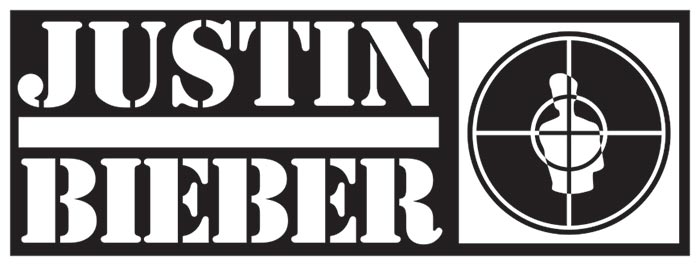 Paul Kim
Paul KimIn the five years since he exploded onto the music scene, Justin Bieber has been endlessly analyzed by media and industry types alike, and most of these efforts have ultimately succumbed to his gravitational pull. Even heavyweight producer Antonio “L.A.” Reid describes meeting then fourteen-year-old Justin thusly: “He came in, and he soaked up all the air in the room…it was the face, it was the hair.” The quote is from Never Say Never, a 2011 pseudo-documentary that clearly aims to calibrate Bieber’s singularity; but it also happens to be true. Bieber is a star—in astrophysical terms, a small but highly dense object with its own lethal gravity. To best understand his force, we must observe the space around him. We must examine the Bieber black hole.
Crucially, it finds its origins at a specific point on the space-time continuum. There were the Disney-ready dimples and the budding talent, yes, but he was also raised when both attributes could be ceaselessly documented. There was his mother, only eighteen when Justin was born, young enough to feel compelled to broadcast her home videos on YouTube, which led to his discovery by manager Scooter Braun, Reid, and pop magnate Usher. YouTube was itself a new entity, and the pool of stars within which one could spot the twinkliest was smaller; ditto Twitter, with its air of faux intimacy, which Bieber seemed to intuit as only youths can.
Along with appearances at seemingly every radio station and mall in middle America, this new online presence gave the fangirl something she had been missing in the stadium era: access or, more precisely, physical closeness. “If I was your boyfriend I’d never let you go,” he tweeted in March 2012, just before the official release of a song that starts with the same line. He would need rather long arms to do so, as he sent this to his tens of millions of followers. The Beliebers—who beliebed him—retweeted it over 100,000 times. From this was born Biebus Maximus.
But no star burns forever. And all boys except one (Michael Jackson) have to grow up. The past year has seen Bieber’s public transformation from precocious tween to arrogant jerk, and his fan base is checking out. Market research firm E-Poll found that by March, only 7 percent of teens thought he was attractive (on average, musicians rate 20 percent), and 54 percent would not recommend his music to friends. Last year, a couple of University of Ottawa academics predicted as much by using a mathematical model of Bieber fever: “Only sustained media attacks, delivered continuously, can turn the tide on what might well be the most infectious disease of our time.”
Meanwhile, Braun has been trying to generate some new chemistry via other young talents. The biggest success has been fellow Canadian Carly Rae Jepsen, thanks almost entirely to Bieber, who promoted her single on Twitter. “Call Me Maybe” became the most downloaded song on iTunes last year and won top digital song at the 2013 Billboard Music Awards. But the only thing anybody remembers from Jepsen’s special night is that Bieber received the Milestone Award, whatever that means, and was booed by the audience. Less a passing of the torch, the affiliation has been more like two ends of a lit wick snuffing each other out at the centre.
“Since 2008, there have been 66 No. 1 songs, and six artists are behind almost half of them,” New York magazine reported last year. The rest of the talent occupies niche markets, far from the orbit of the remaining stars, and everyone else is just space dust. Is this a permanent effect? Hard to say. Science doesn’t help much, post-Bieber. The next big thing, if there is one, will have to be inextricably linked to the medium in which it develops, like Bieber and YouTube, but that’s about as illuminating as it gets. “This isn’t a dying business,” Scooter Braun once assured The New Yorker. “This is a changing business.” What it’s changing into is anyone’s guess.


